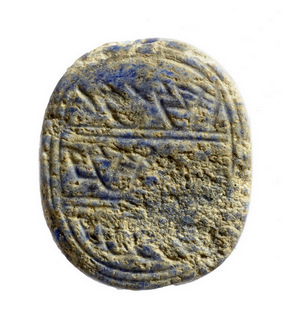Saturday, May 12, 2012
Remains were Discovered of the Closest Building to the First Temple
On its Floor – a Hebrew Seal Bearing the Name ‘Matanyahu’ The remains of a building dating to the end of the First Temple period were discovered below the base of the ancient drainage channel that is currently being exposed in IAA excavations beneath Robinson’s Arch in the Jerusalem Archaeological Garden, adjacent to the Western Wall of the Temple Mount. This building is the closest structure to the First Temple found to date in archaeological excavations.
In the excavations, underwritten by the Ir David Foundation, a personal Hebrew seal from the end of the First Temple period was discovered on the floor of the ancient building. The seal is made of a semi-precious stone and is engraved with the name of its owner: “Lematanyahu Ben Ho…” ("למתניהו בן הו..." meaning: “Belonging to Matanyahu Ben Ho…”). The rest of the inscription is erased.
From the very start of the excavations in this area the archaeologists decided that all of the soil removed from there would be meticulously sifted (including wet-sifting and thorough sorting of the material remnants left in the sieve).
People used personal seals in the First Temple period for the purpose of signing letters and they were set in a signet ring. The seals served to identify their owner, just as they identify officials today.
According to Eli Shukron, excavation director on behalf of the Israel Antiquities Authority, “the name Matanyahu, like the name Netanyahu, means giving to God. These names are mentioned several times in the Bible. They are typical of the names in the Kingdom of Judah in latter part of the First Temple period – from the end of the eighth century BCE until the destruction of the Temple in 586 BCE. To find a seal from the First Temple period at the foot of the Temple Mount walls is rare and very exciting. This is a tangible greeting of sorts from a man named Matanyahu who lived here more than 2,700 years ago. We also found pottery sherds characteristic of the period on the floor in the ancient building beneath the base of the drainage channel, as well as stone collapse and evidence of a fire”.
Subscribe to:
Post Comments (Atom)

No comments:
Post a Comment